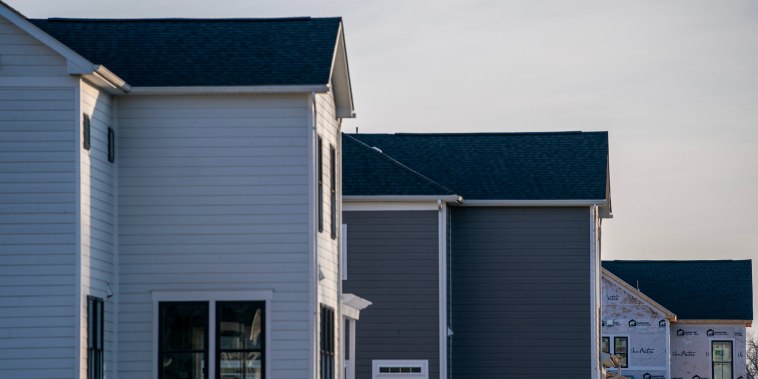The housing market is currently adapting to what many are calling the ‘new normal,’ with mortgage rates climbing to around 7%. This significant increase has undoubtedly caught the attention of potential homebuyers, real estate professionals, and investors alike. The effects of this shift in mortgage rates are far-reaching, impacting various aspects of the housing market and influencing individual decision-making processes. In this article, we will explore the implications of these 7% mortgage rates within the housing market and discuss how stakeholders can navigate this new landscape effectively.
1. Impact on Affordability:
With mortgage rates hitting 7%, affordability becomes a critical concern for those looking to purchase a home. Higher interest rates translate to increased monthly mortgage payments, making it more challenging for buyers to qualify for loans and afford their desired properties. As a result, some potential homebuyers may need to adjust their expectations, opt for smaller or more affordable homes, or delay their purchase until rates become more favorable.
2. Shift in Demand:
The rise in mortgage rates can lead to a shift in demand within the housing market. Buyers who are particularly sensitive to interest rate fluctuations may pull back, reducing competition for homes and potentially slowing down the pace of the market. On the other hand, some buyers may rush to secure a property before rates climb even higher, driving increased activity in the short term. Understanding and anticipating these demand shifts is crucial for both buyers and sellers to make informed decisions.
3. Impact on Refinancing:
Homeowners who have been considering refinancing their mortgages may face a dilemma with the current 7% rates. While some may still find it financially beneficial to refinance, especially if they can secure a lower rate, others may decide to hold off on refinancing due to the higher costs involved. It is essential for homeowners to carefully evaluate their options and consult with financial experts to determine the most suitable course of action.
4. Investment Strategies:
Real estate investors are also affected by the rise in mortgage rates, as borrowing costs increase and potential returns on investment properties may diminish. Investors may need to reassess their strategies, consider alternative financing options, or focus on markets where rental demand remains strong despite higher rates. Diversifying investment portfolios and staying informed about market trends are key strategies for navigating turbulent times in the real estate sector.
5. Long-Term Outlook:
While the current 7% mortgage rates may seem daunting, it is important to consider the broader economic context and long-term projections for the housing market. Interest rates are influenced by a variety of factors, including inflation, economic growth, and government policy. Keeping an eye on these indicators and seeking professional advice can help individuals make well-informed decisions about buying, selling, or investing in real estate.
In conclusion, the housing market’s ‘new normal’ of 7% mortgage rates presents challenges and opportunities for stakeholders across the industry. By understanding the implications of higher rates on affordability, demand, refinancing, investment strategies, and long-term outlook, individuals can adapt to the evolving market dynamics and make informed decisions for their financial well-being. Staying informed, seeking expert guidance, and being flexible in response to changing conditions are essential strategies for thriving in today’s real estate landscape.

